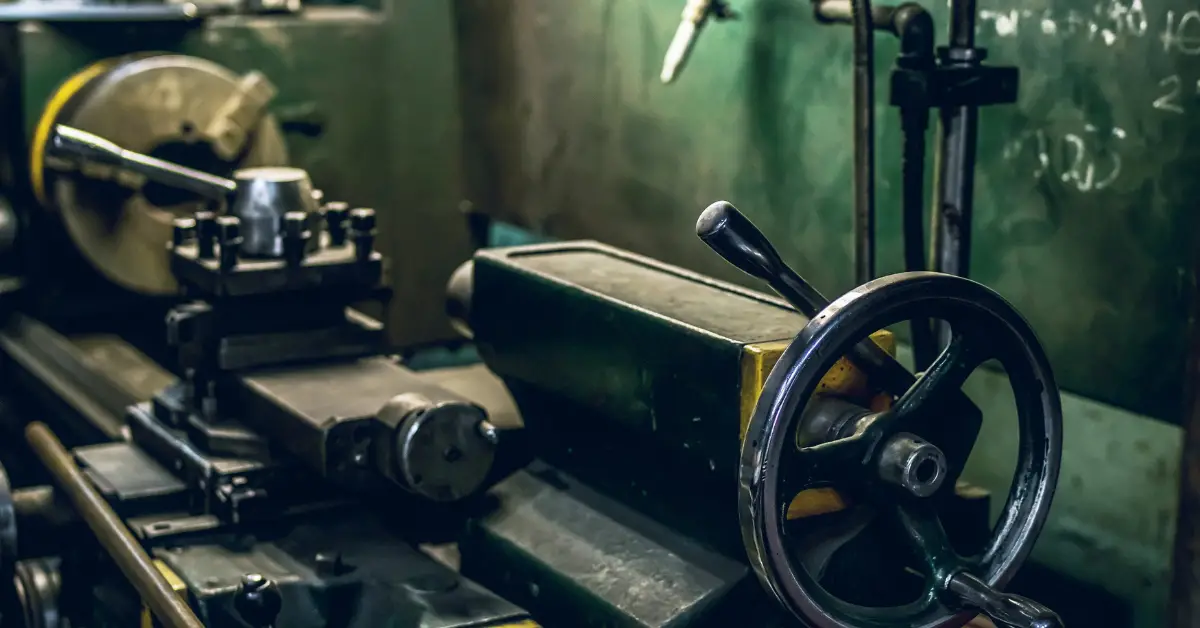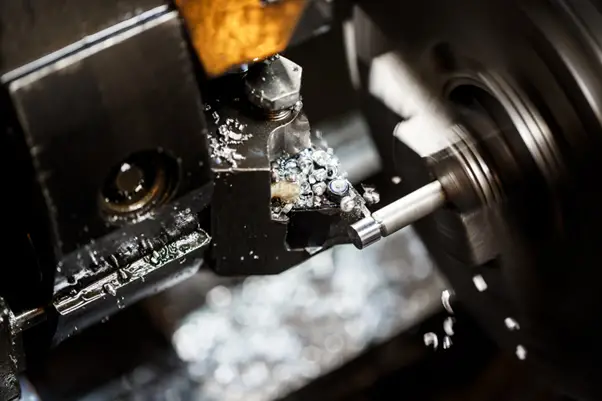Lathes: Advantages and Disadvantages
Ever wondered how lathes can be beneficial? What about the drawbacks of using them? Read on to learn more about the advantages and disadvantages of lathes.
Key Takeaways
- Lathe machines are versatile tools used for a variety of applications.
- Advantages include increased accuracy and improved safety.
- Disadvantages include high initial cost and limited maneuverability.
- Lathes are available in manual and CNC versions.
- Maintenance is required to ensure optimal performance.

What Are the Advantages of Using a Lathe?
There are several advantages of using a lathe that make it an essential tool in any workshop. First and foremost, a lathe allows you to shape and cut materials with precision that is hard to achieve with other tools. Whether you are working on wood, metal, or plastic, a lathe gives you complete control over the end result.
Secondly, lathes are versatile machines that can be used for a range of applications. From turning bowls and pens to making furniture components and machine parts, a lathe is an incredibly useful tool for any DIY enthusiast or professional craftsman.
Finally, using a lathe is also cost-effective in the long run as it saves time and money by reducing waste material. By cutting the material accurately from the start, there is less need for sanding or additional finishing work which ultimately saves time and reduces costs.
In summary, lathes offer numerous benefits including precision cuts, versatility, and cost-effectiveness making them an indispensable tool in any workshop.
What Are the Disadvantages of Using a Lathe?
Using a lathe certainly has its advantages, but what about the disadvantages of lathe machines? Let’s take a closer look.
Firstly, one of the biggest drawbacks of using a lathe is that it can be quite dangerous if not used properly. The spinning motion of the lathe can easily catch loose clothing or long hair, resulting in serious injury. Additionally, the sharp tools used in turning can cause cuts and other injuries if not handled with care. It’s important to always follow proper safety procedures when operating a lathe to avoid these risks.
Another disadvantage of using a lathe is that it requires a certain level of skill and experience to use effectively. If you’re new to turning or don’t have much experience with woodworking, it can be difficult to achieve the desired results. This is especially true when working on more complex projects like bowls or vases. It takes time and practice to develop the necessary skills to use a lathe effectively.
Overall, while there are certainly some downsides to using a lathe, they can be mitigated with proper training and safety precautions. With practice, anyone can learn how to use a lathe effectively and create beautiful pieces of woodworking art.
Some specific disadvantages include:
- High cost associated with purchasing lathes
- Requires frequent maintenance
- Can create a lot of dust and debris during use
Pros
| Advantages | Disadvantages |
|---|---|
| Can create precise shapes and designs | Requires skill and experience |
| Ideal for creating round objects like bowls and vases | Potentially dangerous if not used properly |
| Allows for intricate details and embellishments | High cost associated with purchasing lathes |
In summary, while there are certainly some downsides to using a lathe, they can be mitigated with proper training and safety precautions. With practice, anyone can learn how to use a lathe effectively and create beautiful pieces of woodworking art.
How Does a Lathe Help Increase Productivity?
When it comes to increasing productivity, a lathe is an invaluable tool. With its ability to shape and cut materials with precision, a lathe can significantly reduce the time and effort required for manual labor. Here are some of the ways in which a lathe can help increase productivity:
- Versatility: A lathe can be used for a wide range of tasks, from turning wood or metal pieces to creating intricate designs. This versatility means that you can accomplish multiple tasks with just one machine.
- Efficiency: By using a lathe, you can complete tasks quickly and accurately. The machine’s automation features allow you to produce consistent results at a faster pace than if you were doing the work by hand.
- Cost-effectiveness: Investing in a lathe may seem expensive initially, but over time, it will save you money by reducing labor costs and increasing efficiency.
In short, incorporating a lathe into your workflow can have numerous advantages. From versatility to cost-effectiveness, this tool is essential for businesses looking to enhance their productivity and stay competitive in today’s market.
How Can a Lathe Enhance Quality of Workmanship?
A lathe is an essential tool in any workshop or manufacturing plant. It can significantly enhance the quality of workmanship by improving precision and efficiency. The following are some ways a lathe can enhance the quality of workmanship:
• Precision: A lathe allows for precise cutting and shaping of materials, ensuring accuracy in measurements. This makes it ideal for creating complex parts that require high precision.
• Efficiency: A lathe enables a machinist to quickly and accurately produce identical parts with minimal effort. As a result, it reduces production time and increases productivity.
• Versatility: Lathes can be used to turn various materials such as wood, metal, plastic, and even glass. They come in different sizes and shapes, making them suitable for both small-scale DIY projects as well as large industrial applications.
• Customization: With a lathe, you can customize your products according to your specifications. You can create unique designs that reflect your creativity while maintaining high-quality standards.
In summary, lathes are versatile tools that offer precision, efficiency and customization options to enhance the quality of workmanship. From small DIY projects to large-scale industrial applications, lathes are essential equipment that every workshop should have.
What Are the Safety Considerations for Operating a Lathe?
When operating a lathe, safety should always be the top priority. The spinning machinery and sharp tools can cause serious injury if not handled properly. To ensure the safety of the operator and those around them, there are several considerations to keep in mind.
First and foremost, it’s important to wear appropriate personal protective equipment (PPE) such as safety glasses, gloves, and ear protection. Loose clothing or jewelry should also be avoided as they can get caught in the machine.
Secondly, make sure that the workpiece is secure and properly positioned in the chuck or collet. Any movement of the workpiece while turning can cause damage to both it and the operator.
Lastly, always be aware of your surroundings and avoid distractions while using a lathe. Even a momentary lapse in concentration can result in an accident.
In summary, operating a lathe requires careful attention to detail and adherence to safety guidelines. By following these considerations, you can ensure the safe use of this powerful tool for years to come.
Safety Considerations for Operating a Lathe
- Wear appropriate PPE
- Securely position workpiece
- Avoid distractions
| Potential Hazards | Safety Precautions |
|---|---|
| Flying Debris | Wear eye protection |
| Cuts from tools or workpiece | Wear gloves and avoid loose clothing/jewelry |
| Moving parts/machinery hazards | Be aware of surroundings and avoid distractions |
Does Using a Lathe Require Special Skills or Training?
Using a lathe requires special skills and training, but it’s not rocket science. It’s more like learning to ride a bike – you need to practice and make mistakes to get better at it. The good news is that there are plenty of resources available online and in-person where you can learn how to use a lathe properly.
Here are some examples of the skills you’ll need to master:
- Understanding the basics of lathes: Before using a lathe, you need to know what it is, how it works, and what it’s used for.
- Safety procedures: Like any power tool, lathes can be dangerous if not used correctly. You’ll need to learn safety procedures such as wearing protective gear, securing workpieces firmly in place, and keeping your hands away from moving parts.
- Precision measurement: Lathes require precision measurements for accurate cutting. You’ll need to understand how to measure accurately using calipers or micrometers.
Fortunately, many schools offer courses in metalworking or woodworking that include training on lathes. Additionally, many manufacturers offer training videos or instructions with their products.
In conclusion, while using a lathe does require special skills and training, these skills can be learned through various resources available online or in-person. With the right knowledge and practice, anyone can become proficient at using a lathe safely and effectively!
How Can Errors Be Minimized When Working with a Lathe?
Working with a lathe can be both exciting and challenging. However, errors can happen even to the most experienced lathe operators. The good news is that there are several ways to minimize these errors and ensure that your lathe work is precise and accurate.
Firstly, it’s important to keep the lathe clean and well-maintained. Regular cleaning of the machine will help prevent debris from getting caught in moving parts, which may cause inaccurate measurements or even damage the machine. Secondly, always wear appropriate safety gear such as gloves, goggles and ear protection when working with a lathe.
Additionally, you should take your time when setting up your project on the lathe. Double-check all measurements before starting any cuts, and make sure that everything is properly secured before proceeding. Lubrication of moving parts will also help prevent friction which can cause inaccuracies in cutting angles.
Lastly, be aware of how different materials react to cutting tools. Different types of metals require different speeds and feeds for optimal performance in order to reduce tool wear and tear while maintaining precision cuts.
In short, working with a lathe requires attention to detail but it’s worth taking extra time to ensure accuracy in every cut. Following these tips will help minimize errors and lead to successful projects every time.
- Keep the lathe clean and well-maintained
- Wear appropriate safety gear
- Double-check all measurements before starting any cuts
- Properly secure the workpiece before proceeding
- Lubricate moving parts regularly
- Be aware of different material needs for optimal performance
Advantages vs Disadvantages Table:
| Advantages | Disadvantages | |
|---|---|---|
| Accuracy and Precision | Produces precise cuts with high accuracy | May require a lot of time to set up the machine for optimal performance |
| Versatility | Can be used to create a wide range of shapes and sizes on different materials. | Limited to the size of the lathe bed, which can limit the size of workpieces that can be produced |
| Ease of Use | Easy to learn how to operate with proper training and experience. | Mistakes can cause damage to both the operator and the machine itself if not careful. |
By following these tips, you can minimize errors when working with a lathe. Remember, always prioritize safety first and take your time during setup and cutting processes for optimal results. With practice, you’ll become an expert in no time!
What Types of Materials Are Best Suited to Being Machined by a Lathe?
When it comes to materials that are best suited for machining on a lathe, there are quite a few options to consider. Depending on the type of lathe and tools being used, certain materials may be more ideal than others. For example, softer materials like aluminum and brass tend to be easier to work with, while harder materials like steel and titanium require more skill and patience.
However, just because a material is harder doesn’t necessarily mean it can’t be machined on a lathe. With the right tools and techniques, even the toughest metals can be turned into precision parts or components. Other factors that come into play include the size and shape of the material being worked on, as well as any special features or requirements that need to be met.
Overall, some of the most commonly machined materials on lathes include:
• Aluminum
• Brass
• Copper
• Steel
• Stainless Steel
• Titanium
• Plastics (such as acrylics)
• Wood
Keep in mind that this list is by no means exhaustive – there are many other materials out there that can also be machined effectively on a lathe! Ultimately, choosing the right material comes down to considering factors like hardness, size/shape, tooling requirements, and desired outcome. With practice and experience, anyone can become an expert at selecting the perfect material for their lathe projects.
Wrapping Up
So, in a nutshell, lathes are an essential tool for metalworking and woodworking. They allow for precision cutting and shaping of materials to create intricate designs and functional products. However, like any tool, there are both advantages and disadvantages to using a lathe. How difficult it is to use a lathe machine, depends on certain factors.
On the one hand, lathes can be incredibly versatile and efficient in producing high-quality products. On the other hand, they require significant knowledge and skill to operate safely and effectively. Additionally, they can be expensive investments that may not be practical for every hobbyist or craftsman.
At the end of the day, whether or not to use a lathe ultimately comes down to your personal needs and preferences. But with proper training and practice, a lathe can be an invaluable addition to any workshop or studio. As the old adage goes: “Practice makes perfect.



